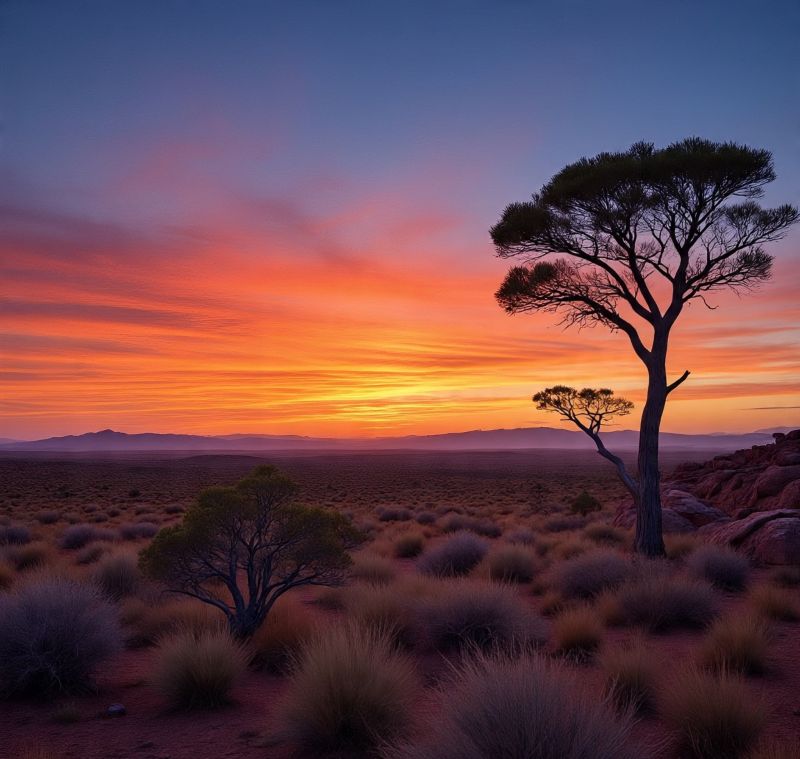Melbourne, Sydney, the Great Barrier Reef, and Tasmania Are Leading Booming Tourism Experiences. Is Australia on Your Bucket List
Explore Australia’s top destinations, from Sydney and Melbourne to the Great Barrier Reef and Tasmania, for first-time travelers seeking urban, cultural, and natural adventures.
Australia has long been recognized by travel experts as offering one of the most diverse travel experiences globally, ranging from vibrant city life to pristine natural landscapes. Analysts frequently suggest that first-time visitors who carefully select destinations can significantly enhance their overall travel satisfaction and personal enjoyment. Reports indicate that international tourists who plan with awareness of transportation options, accommodation costs, and local attractions tend to maximize their exposure to Australia’s unique offerings.
Experts emphasize that focusing on urban hubs such as Sydney and Melbourne, while also exploring natural wonders like the Great Barrier Reef and Tasmania, allows visitors to experience a balanced combination of urban sophistication, cultural immersion, and ecological discovery. Research further highlights that such well-planned itineraries not only boost individual experiences but also influence global tourism patterns, encouraging sustainable and informed travel practices. Travelers who align their trips with seasonal considerations can enhance their satisfaction, increase spending efficiency, and engage meaningfully with local environments.
Tasmania: A Harmonious Blend of Wilderness and Culture
Studies suggest that Tasmania stands out as a destination offering a rare integration of wilderness and cultural experiences. Visitors based in Hobart are often advised to explore the Museum of Old and New Art (MONA), which features an expansive collection ranging from ancient artifacts to contemporary works. The entry fee is around $35 AUD, with convenient ferry access from Hobart costing $25 AUD return.
Cultural immersion continues at Salamanca Market, described as a vibrant hub where local crafts, fresh produce, and street food combine to provide visitors with an authentic taste of Tasmanian life. Researchers note that these experiences support both the local economy and cultural tourism, drawing visitors keen on hands-on, immersive activities.
National Parks in Tasmania also receive significant attention. Cradle Mountain-Lake St Clair National Park ($16.50 AUD daily pass) is reported to have trails suitable for all skill levels, from brief walks to extended hikes, with ample opportunities for wildlife sightings. Likewise, Freycinet National Park ($24 AUD daily pass), home to Wineglass Bay, offers a 2–3 hour hike to breathtaking viewpoints. Analysts indicate that these natural attractions enhance visitor satisfaction and are critical in establishing Tasmania’s reputation as a leading eco-tourism destination.
Gold Coast: Sun, Sand, and Comprehensive Leisure
Tourism reports consistently emphasize the Gold Coast as a major draw for sun, sand, and leisure activities. Its beaches—Surfers Paradise, Burleigh Heads, Currumbin, and Main Beach—offer a mix of high-rise tourist facilities, local culture, family-friendly environments, and fine dining options. Research highlights that these coastal attractions play a pivotal role in shaping international travel choices and significantly contribute to the regional economy.
The region’s theme parks, accessed via multi-park passes costing between $99–140 AUD, are frequently identified as key destinations for families and adventure seekers. Parks such as Movie World, Sea World, and Dreamworld provide a variety of activities catering to different demographics. Additionally, hinterland destinations like Springbrook National Park (noted for glow worm caves and natural swimming holes), Mount Tamborine (wineries and rainforest treks), and Lamington National Park (canopy walks and hiking trails) further enhance the area’s tourism appeal. Experts note that this combination of coastal and inland attractions sustains visitor engagement across seasons, impacting both local employment and tourism infrastructure development.
Cairns: The Adventure Tourism Epicenter
Researchers identify Cairns as a central hub for adventure and eco-tourism, attracting visitors eager to explore rainforest and reef ecosystems. The Daintree Rainforest tours ($150–200 AUD) allow travelers to witness ancient ecosystems where dense rainforest meets coral reef waters, offering both educational and recreational value. Studies suggest that these tours create significant local employment opportunities and enhance Australia’s reputation for ecological diversity.
Transport options such as the Kuranda Scenic Railway ($50 AUD one-way) provide dramatic rainforest views, with optional returns via the Skyrail cable car offering alternative perspectives. Adventure activities like white-water rafting on the Tully River ($165–200 AUD) provide guided full-day experiences, including equipment and meals, attracting thrill-seekers and influencing international perceptions of Australia as a premier adventure destination. Analysts highlight that these activities have a global impact, shaping eco-tourism trends and inspiring similar experiences in other regions.
Blue Mountains: Accessible Natural Wonders
Reports consistently classify the Blue Mountains, located approximately 90 minutes from Sydney, as an accessible destination combining scenic beauty with adventure tourism. Both day trips and overnight stays draw domestic and international travelers alike. Key transportation options include trains from Sydney Central to Katoomba ($8.10 AUD) and car rentals ($30–40 AUD in fuel plus parking fees).
Tourism studies identify Scenic World as a significant attraction, featuring the world’s steepest railway, cable cars, and elevated rainforest walkways. Popular hiking trails, including Wentworth Falls (4 km), Grand Canyon Track (6 km), and Prince Henry Cliff Walk, cater to varied skill levels. Iconic viewpoints, such as the Three Sisters Rock Formation, offer free sunset viewing and contribute to the area’s worldwide recognition as a natural spectacle. Observers note that these attractions influence investment in regional tourism infrastructure while shaping international visitor perceptions.
Melbourne: Australia’s Cultural and Culinary Heart
Research frequently highlights Melbourne as a premier destination for culture, culinary experiences, and urban tourism. Its laneways, including Degraves Street and Centre Place, are renowned for coffee culture, street art, and evening entertainment, providing visitors with a distinctive urban experience. Analysts note that Melbourne’s café culture, with beverages like flat whites and espressos priced $4–5 AUD, is deeply ingrained in the city’s social fabric.
Studies of arts and entertainment suggest that Melbourne hosts numerous galleries, live music venues, and theaters concentrated around the central business district. Transportation options such as free trams in Zone 1 enhance mobility for visitors, while accommodation ranges from $30–50 AUD for hostels to $120–200 AUD for mid-range hotels. Experts note that the city’s urban tourism supports local economic activity and shapes international perceptions of Australia’s cultural sophistication.
Great Barrier Reef: Marine Heritage and Global Significance
Experts confirm that the Great Barrier Reef serves as one of the most important hubs for marine tourism worldwide. Entry points such as Cairns and Port Douglas provide distinct experiences. Cairns is known for a broader range of tours and day trips ($200–300 AUD), with abundant accommodation options, while Port Douglas offers premium reef access at higher costs, appealing to travelers seeking upscale experiences.
Marine activities are diverse, catering to all types of travelers:
- Green Island: Family-friendly and easily accessible
- Fitzroy Island: Popular for snorkeling in less crowded settings
- Outer Reef Sites: Remote areas requiring longer journeys, offering pristine coral formations
Longer multi-day liveaboard tours ($600–1,200 AUD) attract serious diving enthusiasts. Analysts note the importance of practical measures, including reef-safe sunscreen, seasickness medication, and underwater camera rentals ($40–60 AUD/day), to ensure safety and enhance the visitor experience. The reef significantly impacts international travel patterns and contributes substantially to Australia’s marine tourism economy.
Sydney: Urban Gateway and Iconic Landmarks
Analysts consistently regard Sydney as Australia’s principal urban gateway, offering a combination of iconic landmarks and metropolitan conveniences. The Sydney Opera House attracts cultural travelers, with tours at $43 AUD and performances adding value to visitor experiences. Similarly, the Harbour Bridge, while free to cross on foot, offers climbs costing $200 AUD or more, appealing to thrill-seekers.
The Manly Ferry ($7.65 AUD) offers scenic harbor access at an affordable rate, while the Bondi to Coogee Coastal Walk (6 km) allows visitors to explore coastal beauty freely in 2–3 hours. Accommodation options cater to various budgets: $30–50 AUD for budget travelers, $120–200 AUD for mid-range hotels, and luxury stays exceeding $300 AUD. Neighborhoods like The Rocks, Newtown, and Bondi provide historical, cultural, and recreational experiences. Experts recommend using the Opal Card ($15.80 AUD/day) for efficient metropolitan travel.
Research advises traveling during April–May or September–October for optimal conditions. Northern Australia is best visited during the dry season (May–October), while southern regions are warmer from December–March, though more costly. Analysts note that domestic distances often require careful planning, as actual travel times may exceed expectations.
Practical Travel Considerations
Studies emphasize that timing, budgeting, and safety are essential for effective travel planning. Domestic flights range from $100–300 AUD, and car rentals cost $35–60 AUD/day plus fuel. Daily expenditures vary widely: $80–120 AUD for budget travelers, $150–250 AUD for mid-range visitors, and $300+ AUD for luxury tourists. Health guidelines recommend SPF 50+ sunscreen, protective clothing, and maintaining safe distances from wildlife to preserve both safety and environmental sustainability.
Cultural insights highlight the widespread acceptance of credit cards and the need to account for Australia’s vast geography when estimating travel times. Tourism experts note that understanding these practical factors enhances satisfaction, reduces stress, and optimizes global visitor experiences.
Global Tourism Impact
Analysts have observed that Australia’s combination of urban sophistication, natural beauty, and cultural richness significantly shapes global tourism trends. International visitors frequently craft extended itineraries covering Sydney, Melbourne, the Great Barrier Reef, Blue Mountains, Gold Coast, Cairns, and Tasmania.
Well-informed travelers who understand costs, transport logistics, and seasonal variations contribute to local economies through spending on accommodation, tours, dining, and adventure activities. Moreover, this knowledge encourages sustainable travel practices, environmental awareness, and demand for eco-tourism and adventure experiences. Australia’s tourism model demonstrates the successful integration of commercial activity with environmental preservation, offering lessons that influence international travel patterns.
Research suggests that exploring Australia demands a holistic approach, combining urban experiences, cultural immersion, and natural exploration. Prioritizing destinations such as Sydney, Melbourne, Cairns, the Great Barrier Reef, Blue Mountains, Gold Coast, and Tasmania allows visitors to optimize enjoyment and cost-efficiency. Studies consistently indicate that understanding transportation, accommodation, seasonal timing, and activity options is critical to maximizing visitor satisfaction and sustaining tourism growth.
Ultimately, Australia exemplifies how strategic travel planning contributes to international tourism trends, fostering cultural engagement, economic impact, and sustainable exploration. Analysts agree that lessons from Australian tourism extend globally, guiding how international travelers approach multi-destination itineraries with informed, environmentally conscious choices.
The post Melbourne, Sydney, the Great Barrier Reef, and Tasmania Are Leading Booming Tourism Experiences. Is Australia on Your Bucket List appeared first on Travel and Tour World


Comments and Responses
Please login. Only community members can comment.